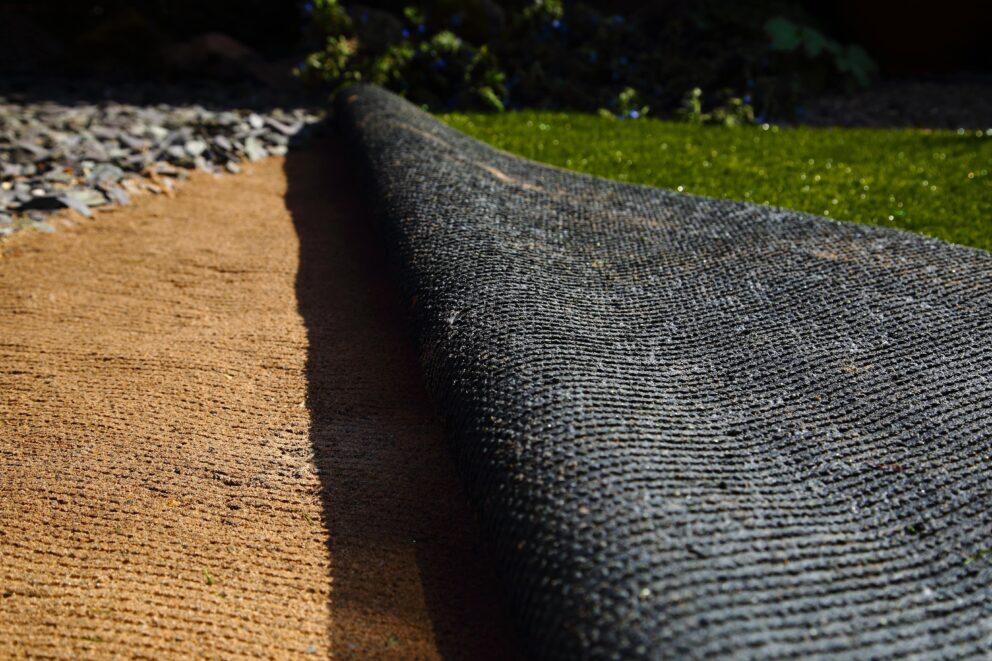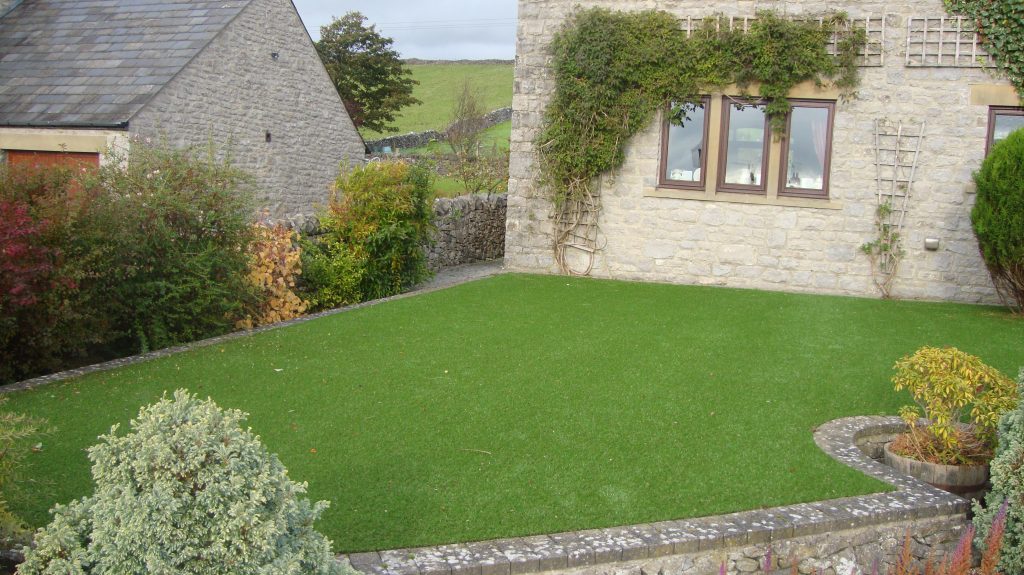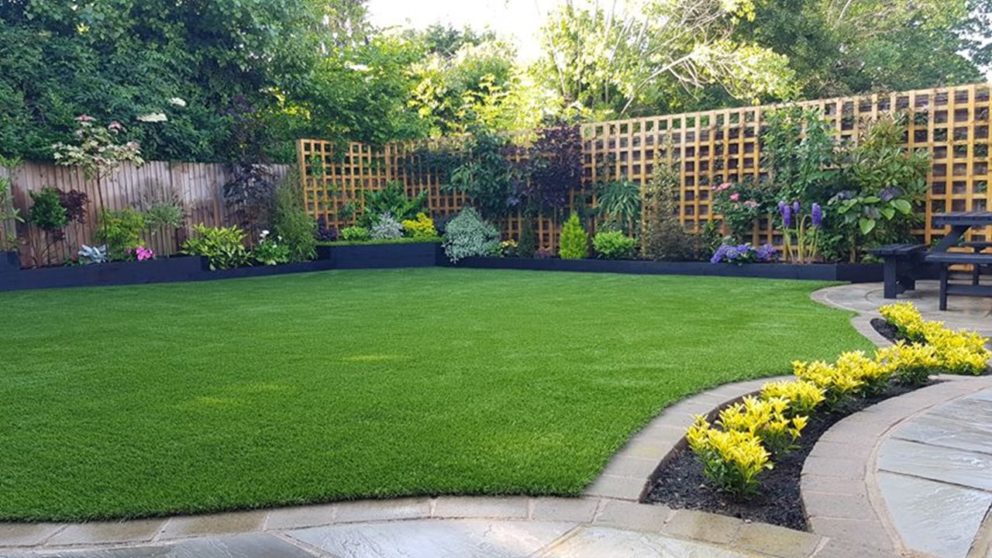Key Points for Laying Artificial Grass
Before delving into the specific installation methods, it’s important to understand the key points that apply to laying artificial turf on any surface. These considerations will ensure a successful and long-lasting installation:
Prepare the area
Start by clearing the existing vegetation, debris, and any rocks or roots that may interfere with fitting artificial grass. Level the area to provide a flat and even base for the installation.
Use a weed membrane
Placing a weed membrane over the prepared area will prevent weed growth and help with drainage, ensuring your artificial lawn remains free from unwanted vegetation and waterlogging.
Choose the right artificial grass
Nomow offers a wide range of grass options to suit various applications and preferences. Consider factors such as pile height, colour, and texture to find the perfect match for your space.
Plan the layout
Measure and sketch the area, considering any curves, corners, or obstacles. This step will help you calculate the required amount of synthetic grass and reduce wastage.
Invest in quality installation materials
To guarantee a professional finish, use high-quality adhesive, joining tape, and fixing pins. These materials are essential for securely fastening the artificial grass in place.
How to Lay Artificial Grass on Soil
Installing artificial grass on soil requires careful preparation to create a stable and well-drained base. Follow these steps for a successful installation:
- Clear and level the area: Remove any existing natural grass, vegetation, rocks, or debris. Level the soil using a rake or a compacting tool.
- Install a weed barrier: Lay a weed membrane over the soil, ensuring it covers the entire area. This will prevent weed growth and promote proper drainage.
- Add a base material: Spread a layer of crushed stone base or granite dust to a depth of approximately 2-3 inches. Compact it with a roller or tamper to create a stable foundation.
- Lay the grass: Roll out the artificial grass, ensuring it’s even and covers the full surface area. Trim off any excess material using a turf cutter.
- Secure the edges: Use fixing pins to anchor the edges of the artificial grass, spacing them approximately 12 inches apart. Hammer the pins into the ground until they are firmly in place.
- Join the seams: If your lawn requires multiple rolls of artificial grass, use joining tape and adhesive to secure the seams. Follow Nomow’s instructions for proper application.
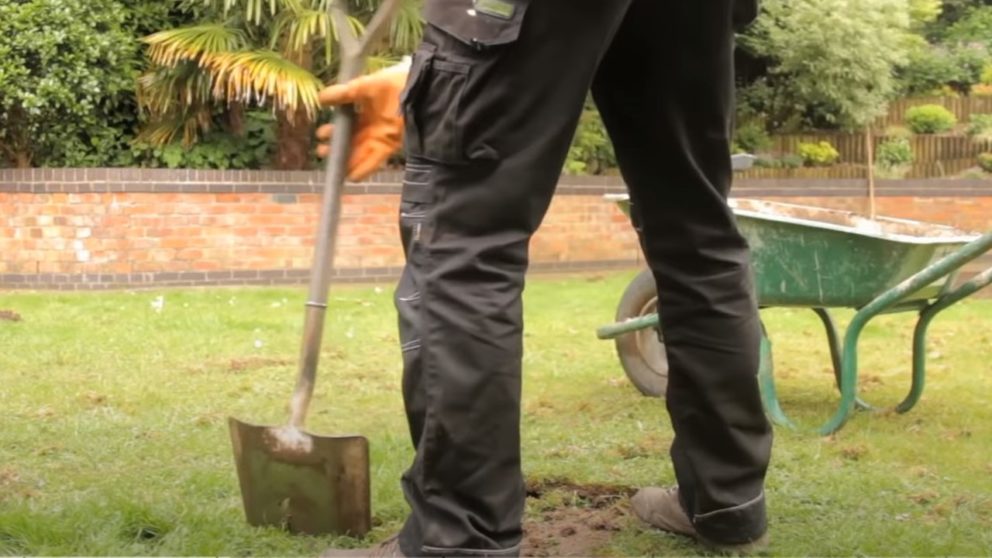
How to Lay Artificial Grass on Concrete
Transforming a concrete surface into a lush green area is easier than you might think. Follow these steps to lay artificial grass on concrete:
- Clean the concrete surface: Remove any dust, debris, or grease from the concrete using a pressure washer or a stiff brush. Ensure the surface is completely dry before proceeding.
- Apply adhesive: Using a suitable adhesive, apply a thin and even layer over the concrete. Be sure to follow the manufacturer’s instructions for the recommended adhesive and drying time.
- Roll out the artificial grass: Carefully unroll the artificial grass over the adhesive, ensuring it aligns correctly. Allow the grass to settle for a few hours.
- Trim and secure the edges: Trim any excess material using a sharp knife. Fix the edges of the artificial grass to the concrete using adhesive or joining tape, ensuring a secure fit.
- Join multiple rolls (if necessary): If your area requires more than one roll of artificial grass, use joining tape and adhesive to connect the seams, following the manufacturer’s guidelines.
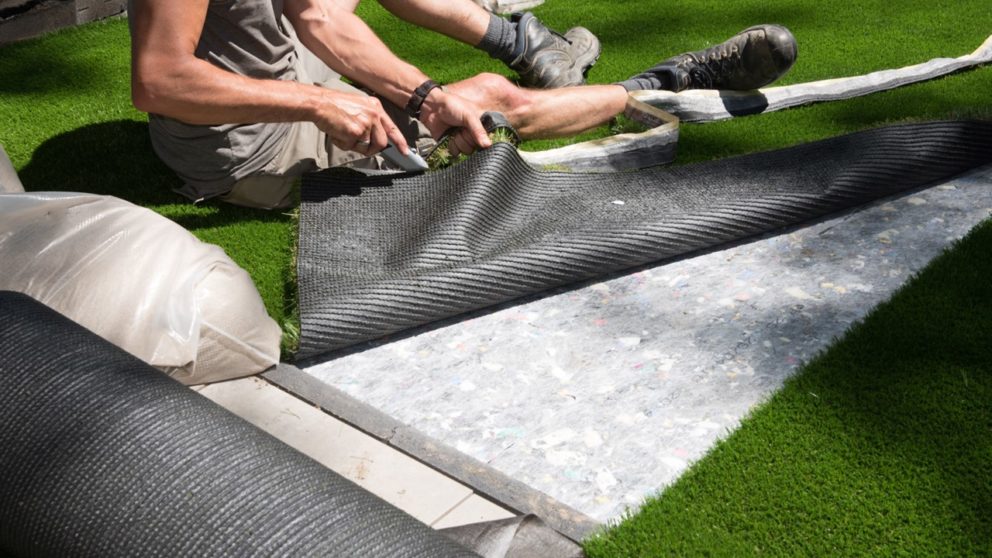
How to Lay Artificial Grass on Sand
Laying artificial grass on sand provides excellent drainage and stability. Follow these steps for a successful installation:
- Prepare the sand base: Clear the area and ensure it is level. Add a layer of sharp sand to a depth of approximately 2 inches, spreading it evenly across the surface.
- Compact the sand: Use a vibrating plate compactor or a hand tamper to compact the sand. This step ensures a solid and even base for the artificial grass.
- Install a weed barrier: Lay a geotextile membrane over the compacted sand, overlapping the edges. This will prevent weed growth while allowing water to drain effectively.
- Roll out the artificial grass: Unroll the artificial grass over the sand, allowing it to settle naturally. Trim any excess material and ensure the edges align with the desired boundaries.
- Secure the edges and join the seams: Use fixing pins to secure the edges of the artificial grass into the sand. Use joining tape and adhesive to create seamless connections if multiple rolls are necessary.
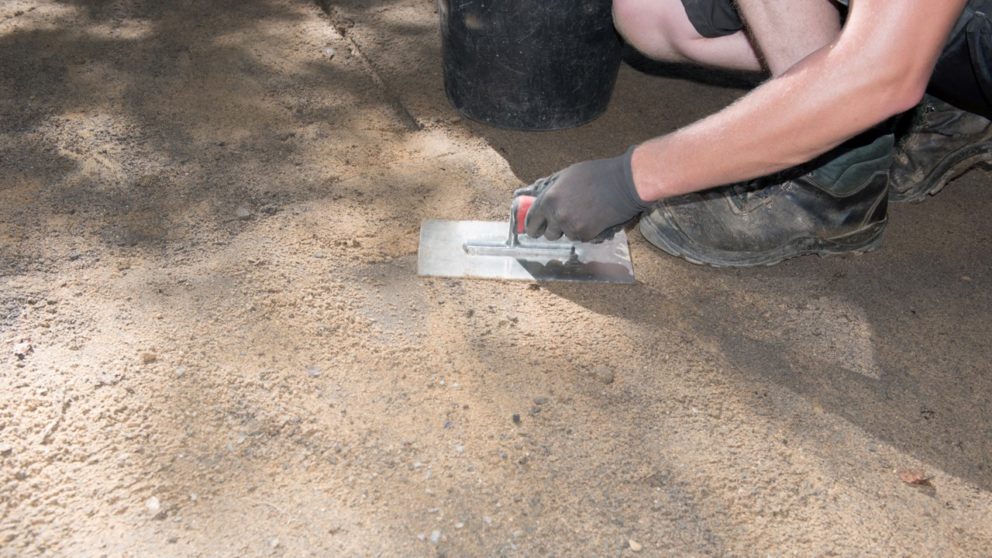
How much does it cost to lay artificial grass?
Determining the exact cost of laying artificial grass can depend on several factors, including the size of the area, the type and quality of the artificial grass selected, and any additional materials or services required.
To get an accurate estimate tailored to your specific project, contact us. Our team of professional installers will be more than happy to discuss your requirements, provide professional guidance, and offer a personalised quote.
With Nomow’s extensive experience and commitment to customer satisfaction, you can trust that you’ll receive a competitive price for your artificial grass installation.
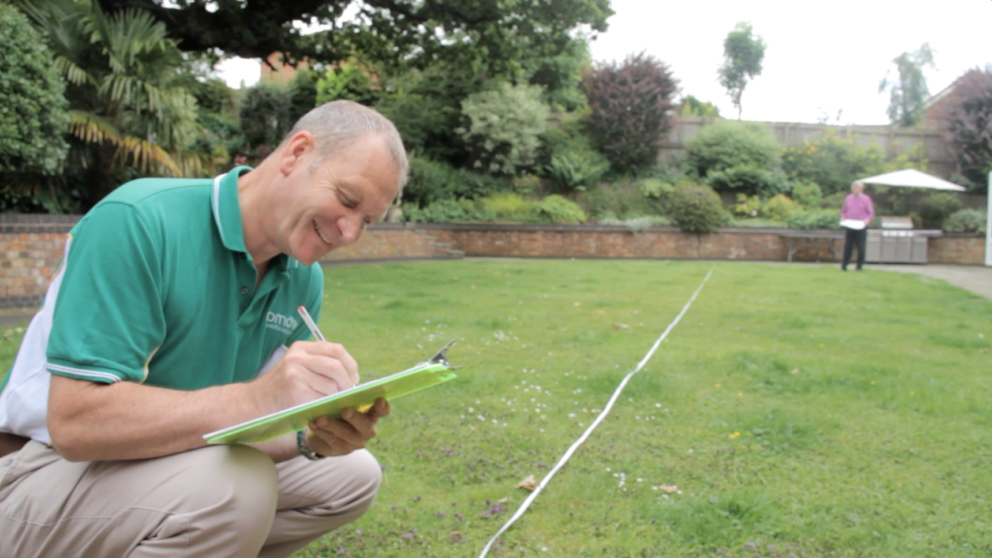
Laying artificial grass can transform your outdoor space into a beautiful, low-maintenance garden. By following the key points and step-by-step instructions provided in this guide, you’ll be able to achieve a flawless installation.
Nomow offers a wide range of premium artificial grass products to suit your needs. To view our full range, click the button below.

